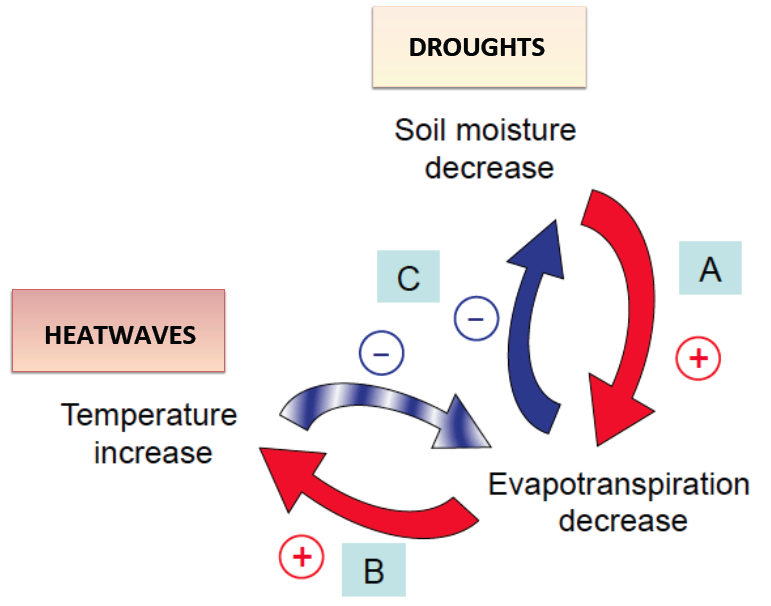DROUGHT-HEAT
Land-Climate Interactions: Constraints for Droughts and Heatwaves in a Changing Climate
Childpage navigation
The ERC project DROUGHT-HEAT has finished. This site is no longer maintained and updated. For current projects, please refer to the Land-Climate Dynamics website.
Project Description
Land-climate interactions mediated through soil moisture and vegetation play a critical role in the climate system, in particular for the occurrence of extreme events such as droughts and heatwaves. These interactions are studied in the ERC granted project DROUGHT-HEAT lead by Prof Sonia I. Seneviratne.
Objectives

The overall objective of the DROUGHT-HEAT project is to develop a comprehensive and quantitative leading-edge understanding of the land-climate feedbacks controlling heatwaves and droughts in both present and future climate, with the aim of reducing key uncertainties in ESMs and climate projections, and to advance climate change mitigation and adaptation. We consider the processes on global scale, as well as focus on several key land regions including Europe, North America, the Amazon region, and further major agricultural and/or drought-prone regions.
Background
In the past years, in-situ and remote sensing-based datasets of soil moisture, evapotranspiration, and energy and carbon fluxes have become increasingly available, providing untapped potential for reducing associated uncertainties in current climate models (also known as Earth System Models (ESM)). The DROUGHT-HEAT project aims at innovatively exploiting these new information sources in order to
- derive observations based diagnostics to quantify and isolate the role of land-climate interactions in past extreme events (“Diagnostic Atlas”) ("Processes, Work package 1"),
- evaluate and improve current ESMs and constrain climate-change projections using the derived diagnostics ("Earth System Models, Work package 2") , and
- apply the newly gained knowledge to frontier developments in the attribution of climate extremes to land processes and their mitigation through “land geoengineering” ("Frontier applications, Work package 3").
Ground-breaking nature of the project
The DROUGHT-HEAT project integrates the newest land observational datasets with the latest stream of ESMs. Novel methodologies will be applied to extract functional relationships from the data, and identify key gaps in the ESMs’ representation of underlying processes. These will build on physically-based relationships, machine learning tools, and model calibration. In addition, they will encompass the mapping and merging of derived diagnostics in space and time to reduce “blank spaces” in the datasets.
There are two main axes for the project, on the one hand the investigation of droughts vs heatwaves, and their interactions and on the other hand the methodological components within the single work packages. There will be intense interactions and collaborations between the paired PhD theses within each work package, as well as across work packages with respect to data and methodological exchanges.
The DROUGHT-HEAT project is unprecedented in its breadth and scope and will allow a major breakthrough in our understanding of the processes leading to heatwaves and droughts